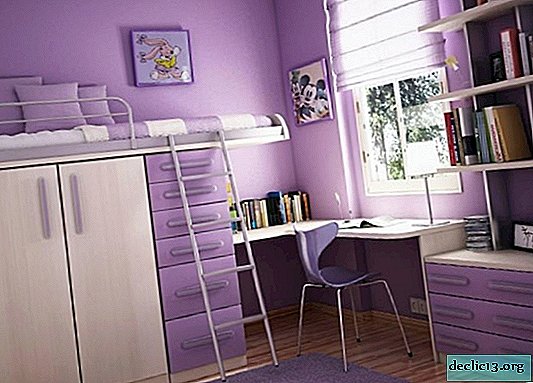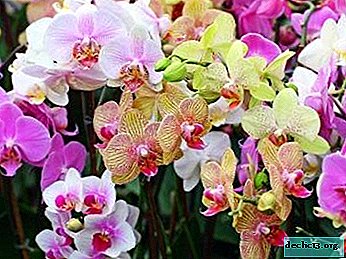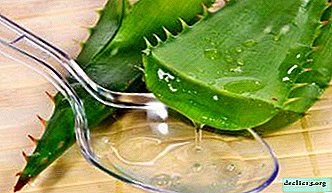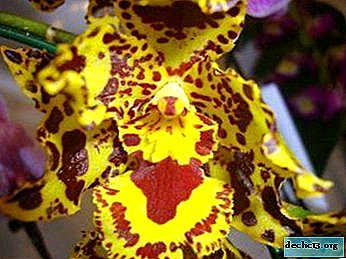Tips on how to properly water a room rose in a pot so that the flower grows healthy and beautiful
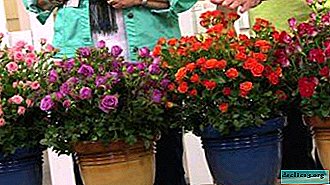
Many housewives and gardeners become owners, not only of bush roses, but also plant them in pots, preferring home roses.
Flowers require attention and special care, one of the points of which is watering. If you organize the correct watering system for a plant, then it will delight the owner of a chic flowering and healthy appearance.
The importance of regular hydration
Rose is a water-loving plant, so you need to carefully ensure that the soil does not dry out. Otherwise, the roots will begin to dry out, which will lead to an imminent death of the plant or it will have to be reanimated in order to save from complete drying out. The abundance of water, which leads to decay of the root system, can become another extreme.
Features for a home plant
Watering a potted flower is described as plentiful, it is important that the soil in the pot does not turn into a dry lump of earth. Also, if you fill the plant with water, this can lead to decay of the root system. Therefore, watering a flower should be treated with prudence. You also need to put a pallet and provide a drainage system in the pot, this will allow the plant not to rot from excess moisture and completely soak the soil in the pot. Water poured into the pan must be poured 10-15 minutes after watering.
How often to water?
The frequency of watering depends on the degree of drying of the soil, as well as on the season when watering occurs.
Dependence on various factors
Watering dependence changes when seasons change, since wintering is replaced by a period of rapid growth, and each individual species needs a certain approach, depending on the number of leaves, the abundance of flowering and the amount of moisture consumed.
From the time of year - the nuances of summer and winter
 In summer, the plant requires abundant hydration and additional nutrition. Therefore, the regularity of watering can be every three to four days. The best option is to test the soil, if it has dried, then moistening is required.
In summer, the plant requires abundant hydration and additional nutrition. Therefore, the regularity of watering can be every three to four days. The best option is to test the soil, if it has dried, then moistening is required.If the weather is sunny, then watering should occur once in one to two days, and on cloudy days it is worth spraying the leaves of the plant, and watering should be reduced to once every three to four days.
You can not spray the plant on sunny days, this can lead to a burn of leaves.
- In winter, plant nutrition is minimal; therefore, it is necessary to reduce watering and the application of mineral fertilizers, since the plant is in hibernation.
From the kind of flower
Hibiscus, for example, is sensitive to humidity of air and soil, so you should carefully monitor its watering, which is best done through a pallet. Pour water into the pan and wait until it is absorbed into the ground. Also leaves and inflorescences need to be sprayed periodically. If you do not follow the rules, then the leaves may wither and fall, as well as the buds.
How much water do you need?
Water the flower so that the soil is sufficiently moist, but not flooded. Make sure that the earth does not squish, and put down the pallet so that excess water merges from the earth, and the roots of the plant do not begin to rot.
How to irrigate?
The plant should be watered only with sedimented water for at least 24 hours or filtered. It should be at room temperature.
Consequences of errors
The main consequence of improper watering is the slow death of the plant., lack of a healthy appearance and flowering, leaves begin to fall off gradually (why a rose can drop leaves and buds, read here).
Important! If you do not notice in time and do not reconsider your care for the plant, then it can die.Step-by-step instructions on how to properly water a potted plant
- It is necessary to collect water in containers and leave it to settle. You can also collect water from the filter and leave it so that its temperature rises to room temperature.
- We put a pan under the pot, which should already be there, check if there is a drainage system in the pot.
- The amount of water is determined by the diameter of the pot, it is important that the soil is moist, but not flooded, it should not squish from excess water.
- After 10-15 minutes, you need to drain the spilled water into the pan; this is one that the plant does not need and will be redundant.
- In the summer we water the plant once every one to two days, in winter we reduce watering to once every five to six days.
- We also make top dressing in the summer once a week, and in the winter we reduce it to once a month - one and a half.
How to fix the consequences of errors?
 There are various consequences of improper watering, the main of which are associated with the root system.
There are various consequences of improper watering, the main of which are associated with the root system.
- Heavy watering:
- with abundant watering, the root system rots;
- in this case, you need to pull out the root system of the plant and check it for decay;
- all damaged areas need to be cut and processed with a special tool;
- transplant the flower into new soil and install a flower watering system.
- Insufficient watering:
- insufficient watering leads to drying out of the root system;
- if she did not have time to completely dry, then you just need to restore the system of watering and fertilizing the soil of the flower;
- if the root system has dried up, then it is necessary to resort to resuscitation of a room flower, if it is not too late;
- but at the same time it is not necessary to fill the plant, another option is to transplant a flower into a new soil that is not dried up.
What else is included in the care?
Caring for a room rose includes many more aspects, consider the main ones:
- Lighting. Despite the fact that the rose does not tolerate direct sunlight, it needs sufficient sanctification and warmth. Choose a suitable place, because without sufficient consecration, the flower will begin to wither.
- Mineral fertilizers. In summer, fertilize at least once a week, alternating between mineral and organic. You need to feed the plant in moist soil and preferably in the evening.
- Thermal mode. Roses do not like overheating, so the temperature will be optimal from 18 to 25 degrees. Do not leave the pot in a draft or near heating appliances.
- Pruning. Cut the roses after they have bloomed, this will allow them to bloom regularly and every season.
- Pests and diseases. Inspect the plant for pests and diseases to quickly prevent their development. Pests should be immediately removed from the leaves or root system and treated with a special tool.
We invite you to watch a video about caring for indoor roses:
With a properly installed irrigation system, the rose will delight you for a long time, it will bloom regularly and for a long time, starting from the first heat and until late autumn. Pay attention and thrift to the purchased pet, and it will undoubtedly give you the mood, even on the most cloudy and sad days.

 In summer, the plant requires abundant hydration and additional nutrition. Therefore, the regularity of watering can be every three to four days. The best option is to test the soil, if it has dried, then moistening is required.
In summer, the plant requires abundant hydration and additional nutrition. Therefore, the regularity of watering can be every three to four days. The best option is to test the soil, if it has dried, then moistening is required.
